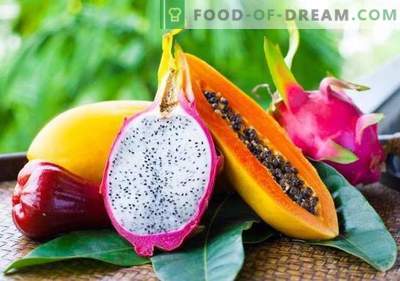Thanks to world trade and the rapid development of transport flows, today we can savor the fruits of plants that do not grow in our climatic conditions. At the same time, some of them became so fond that they firmly entered into our daily diet. And what do we know about how these “overseas dishes” grow?
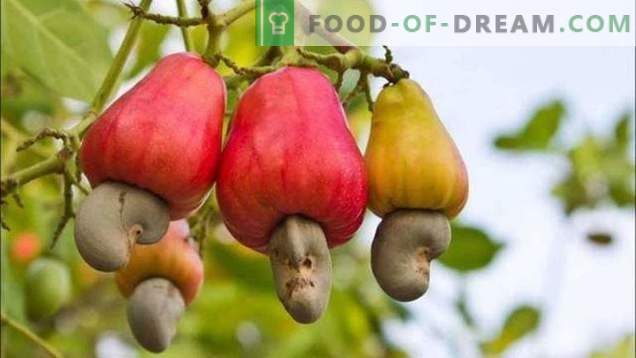
Our publication will tell you the fruits of which plants are 15 well-known products. It should be noted that some of them, from the point of view of biology, are not considered as fruits.
1. Capers

Capers, for example, are not at all fruits, but unblown buds of a herbaceous prickly caper plant. If you let them bloom, you can long admire the white flowers of stunning beauty, and then collect the fruits. True, they are considered less tasty than the buds, so usually, when purchasing canned capers, we buy exactly the unblown flower buds of the prickly caper.
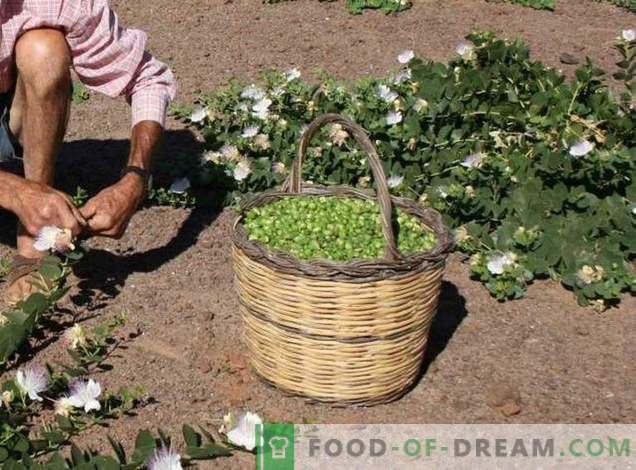
Capers spiny is an extremely tenacious plant. Its roots reach the groundwater, growing to 20 meters, the length of the branches reaches 1, 5 meters. He lives in nature on stones, in the cracks of the walls, and therefore brings considerable trouble to the historical architectural monuments in his homeland - in Central Asia. It is grown on an industrial scale today, mainly in the Mediterranean countries of Europe, whose cuisines are rich in dishes with capers. In the original recipe of the famous salad “Olivier”, by the way, capers were used, not pickles. In the wild it grows in the Caucasus, Crimea, Kazakhstan.
2. Figs
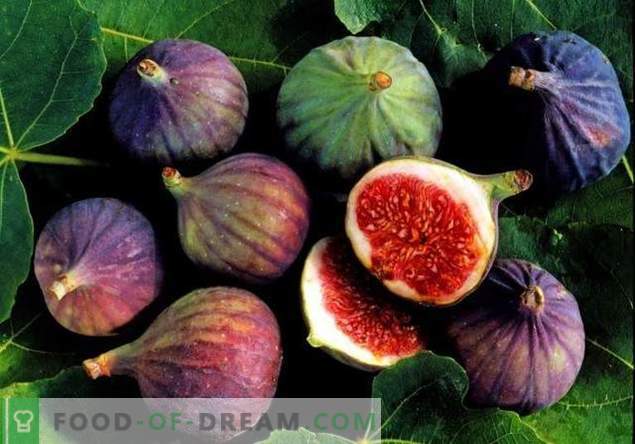
India and the Mediterranean are considered to be the birthplace of figs. These fruits grow in subtropics on trees or large shrubs, reaching a height of ten meters. On the banks of rivers fig trees or fig trees (other names of figs) form impassable thickets. These plants also love the southern slopes of the mountains, where they can grow at an altitude of up to 2,000 meters above sea level.

In Russia, figs are cultivated only in the southern regions, and the main industrial plantations of fig trees are located in Turkey, Greece, Tunisia, South America, Portugal and Italy. This plant does not withstand frost below -12 degrees Celsius. But you can grow figs with success at home, as a decorative culture. Kadadochnye fig tree grow no higher than 3 - 4 meters.
For information on how to grow figs, read the article: Figs is a wine berry.
3. Papaya
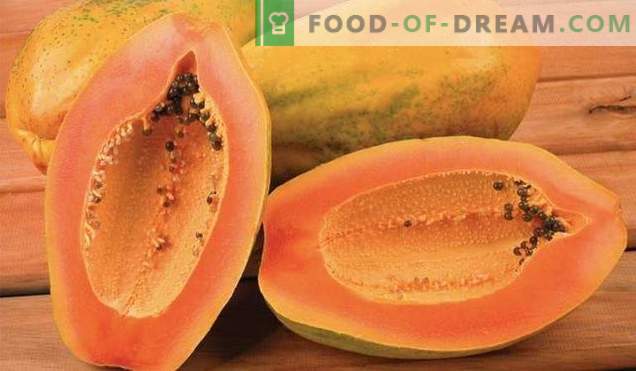
The melon tree is also called the plant on which papaya fruits originate, come from Central America and Mexico. Papaya does not tolerate sub-zero temperatures, even the most minimal, and therefore grows only in the tropics. The plant looks like a palm tree, but it is not. This tree, reaching 15 meters in height. The diameter of the hollow inside the trunk at the base is 30 cm, and the lateral branches are completely absent.
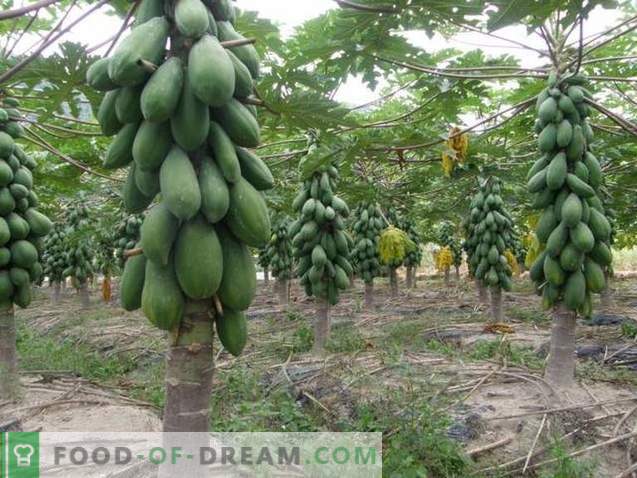
Papaya leaves form only at the top of the trunk and can grow up to 90 cm in length. Interestingly, the plants are male and female flowers. In this case, more often on one tree grow flowers of only one sex. But during high summer temperatures, the floor of flowers may change from female to male and vice versa.
4. Brazil nut

Brazil nut is a tree that grows in the wild forests of Brazil, and also in Peru, Colombia, Bolivia and Venezuela. This plant has two features that, like its fruits, deserve great attention. Firstly, the battle years (one more name of it) is one of the largest plants on our planet. It reaches a height of 30-45 meters, and the diameter of the brazil nut can be about two meters. Secondly, this tree is an absolute long-liver. Although it is officially considered that the bartoletias live only for half a millennium, Brazilians claim that this tree grows and bears fruit for up to 1000 years. And even show tourists such specimens, although, of course, to verify the accuracy of this information is difficult.

Another feature of the Brazil nut, it bears fruit only in the wild. And the richest harvests are not harvested in Brazil, as one might think, but in Bolivia. The fruit itself looks like a large box, reaching 15 cm in diameter and two kilograms of weight. And the so-called nuts are the seeds of this fruit.
5. Pitahaya (dragon fruit)
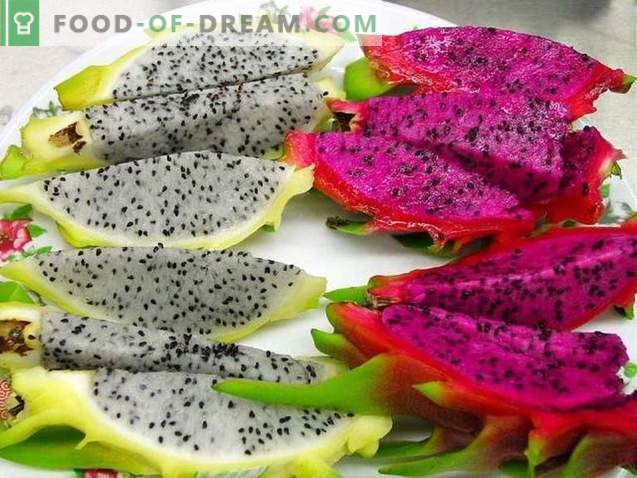
The dragon fruit grows on a cactus. True, not quite normal. Pitahaya is a lianoobrazny climbing cactus, successfully grown today in Central and South America, Australia and the countries of South-East Asia. Interestingly, these cacti are very prolific - from one hectare of plantings for the year you can get about thirty tons of harvest. Petahaya bears fruit up to six times a year!
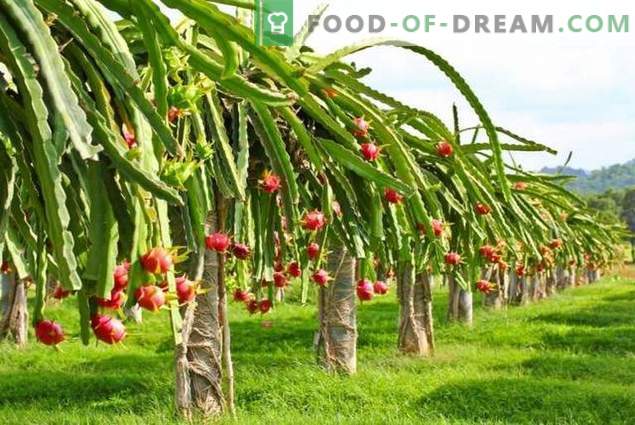
Another feature of the plant that gives us these sweet fruits with an incredibly delicate creamy pulp, it blooms only at night. Large white flowers have a very pleasant persistent odor.
6. Wasabi
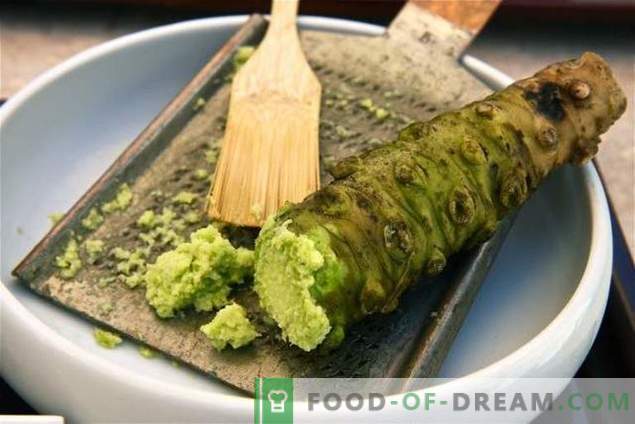
A perennial herb eutrem Japanese, from the rhizome of which they prepare the world famous seasoning for Japanese dishes - wasabi, grows up to half a meter high. It is noteworthy that the rhizome itself grows very slowly, maximum, gaining a length of 3 cm per year. Mature is considered to be the root only on the 3rd - 4th year. The people called wasabi Japanese horseradish, although with horseradish this plant has little in common - only belonging to the same family.
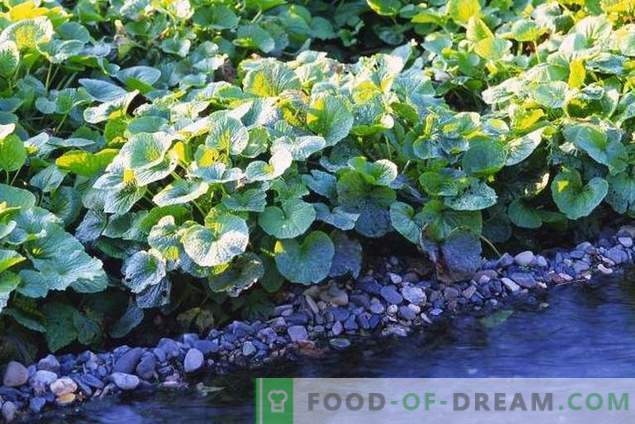
Another feature of wasabi is that the rhizome has different sharpness in different parts. But this is only a feature of real wasabi - a plant that grows exclusively in the flowing waters of the mountain streams. Vegetable grown in the garden does not have a tenth of the beneficial properties that “honwasabi” possesses (as the Japanese call real wasabi), however, and such vegetable wasabi is much cheaper.
For information on how to grow Japanese euterma - wasabi, read the article: Japanese Eutremia - “Japanese horseradish” wasabi.
7. Turmeric

A perennial plant of turmeric from the ginger family can reach a height of up to one meter. It is grown commercially today in Japan and China, India and Indonesia. In these parts, turmeric is considered the most popular seasoning.
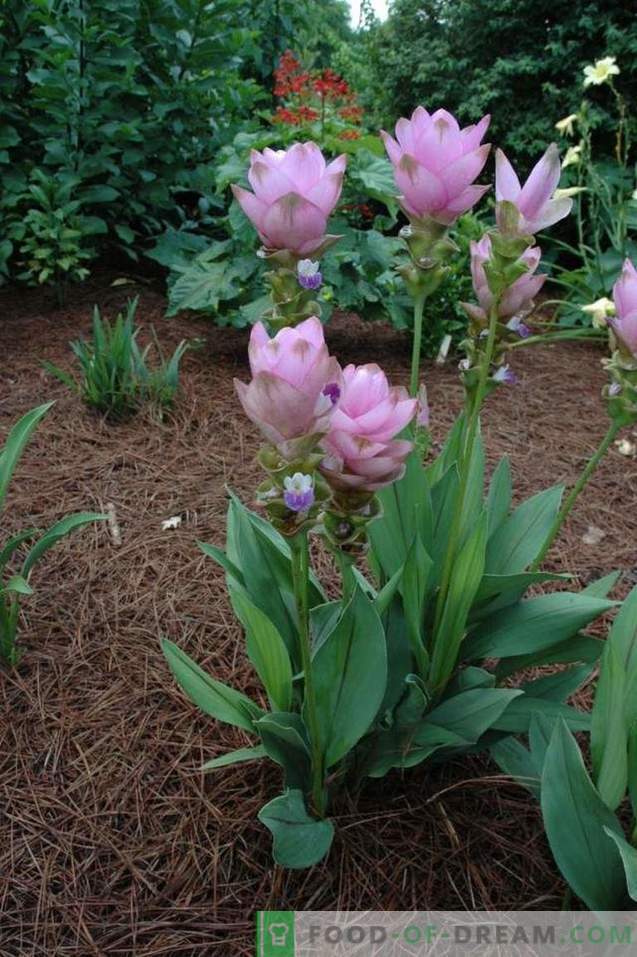
For the preparation of spices, they use only the rhizome of Indian saffron (the second name of the plant), but the plant itself is quite decorative. Small flowers are combined into large (up to 20 cm in length) inflorescences and can boast very beautiful bracts. One bush of turmeric (long leaves grow straight from the soil) may have several such inflorescences. At the same time, the flowering of turmeric is very long - up to three months. Therefore, today we have this plant is gaining popularity in home gardening.
For information on how to grow turmeric, read the article: Daring room turmeric forms.
8. Carnation
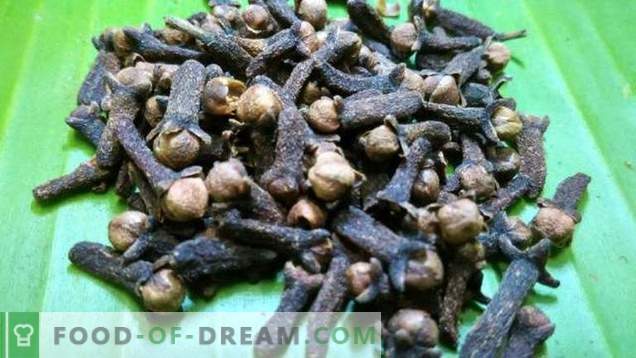
The world-famous spice of carnation is not the blossoming flower buds of a large evergreen tree (up to 20 meters high), which grows mainly on the islands of Pemba and Madagascar. One third of the global supply of cloves comes from there.
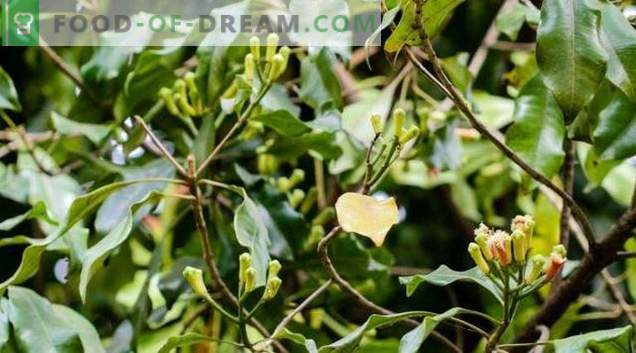
It blossoms and, accordingly, “buds” fruits of the carnation twice a year. The assembly process is simple, so this spice is relatively inexpensive. In greenhouse conditions, carnation is also grown, but it is quite a troublesome process. However, as well as care for any exotic home plants.
9. Avocados
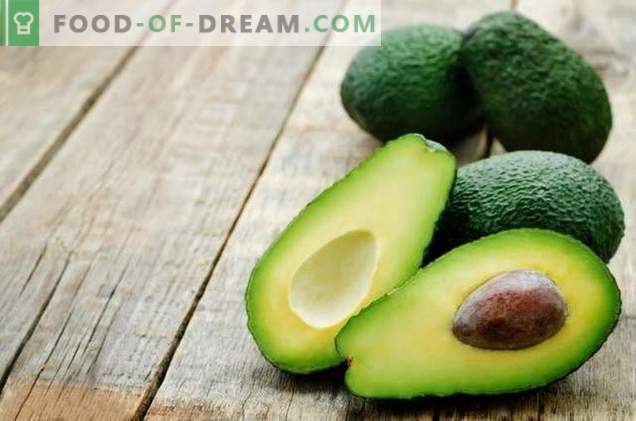
Avocados from the point of view of biology - berry drupe. It grows on an evergreen tropical tree with a wide crown and a height of 15 meters. Most growers constantly prune avocado trees at a level of about 5 meters to simplify harvesting.

The peculiarity of avocado fruits is that they never fully ripen on the tree. After collecting the fruits, it takes at least 1-2 weeks, during which they reach the desired condition at room temperature. Therefore, if you bought a ripe avocado is not normal. Just put it in a dark locker for a few days.
For information on how to grow avocados, read the article: Secrets of growing avocados at home.
10. Black pepper
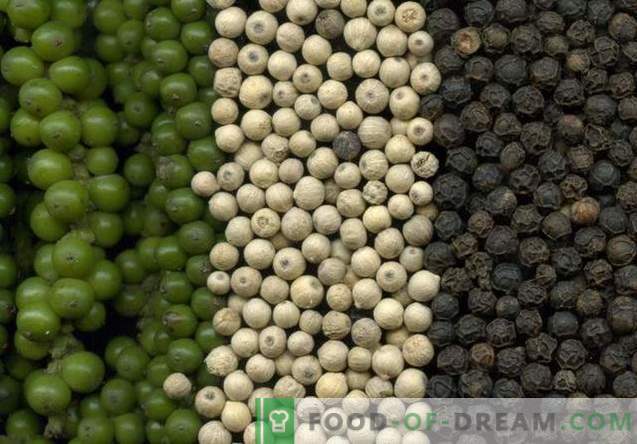
The most common spice on planet Earth is black pepper. These are fruits of perennial evergreen tree peppers of the family of pepper.
The Malabar berry (also called black pepper) grows in tropical forests, wrapping around trees and reaching 15 meters in length. Commercially, black pepper is grown on special grids or supports.
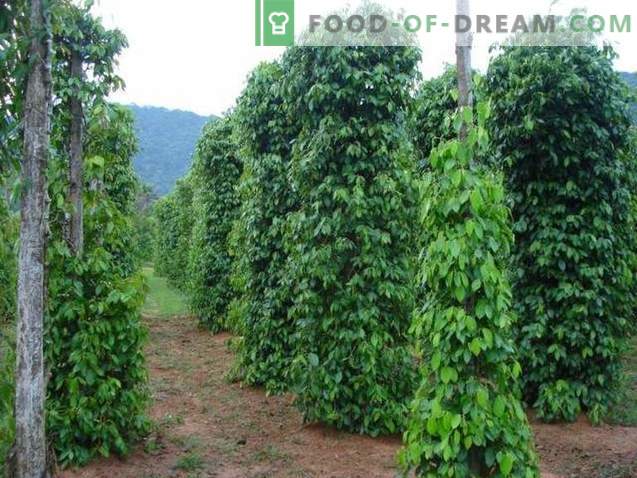
At the beginning of ripening, the fruits of the plant have a green color, darkening with time and acquiring a more intense aroma. If the pepper berries are overripe, peel them off, leaving only the white core. Such black pepper is called “white” on sale. Its taste is not so sharp, but the smell is more intense.
To learn how to grow black pepper, read the article: Black Pepper, or “Malabar Berry”.
11. Quinoa
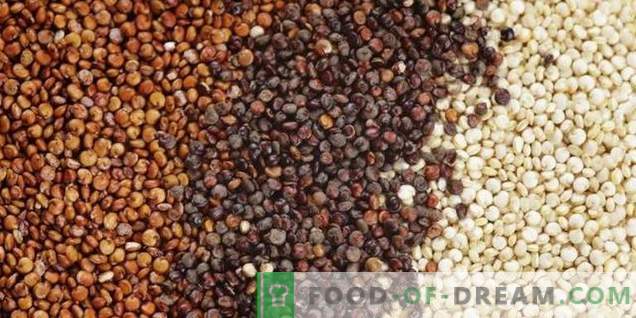
The quinoa plant looks like tall grass. It grows up to four meters, has a hard branching stalk, large round leaves and large inflorescences. Biologists attribute the culture to pseudo-grains, due to the absence of a hard shell on the fetus. Today it is known about hundreds of varieties of quinoa, but only three of them are grown for commercial purposes.

It has been proven that quinoa was the basis of the diet of the ancient Indians. “Golden Grain”, the so-called Incas, who considered these fruits to be as important as potatoes and corn. At the beginning of the 21st century, quinoa became popular all over the world thanks to healthy food lovers. However, this product must be introduced very carefully into your diet: it is a strong allergen.
For information on how to grow quinoa, read the article: Quinoa - dietary culture in your garden.
12. Vanilla
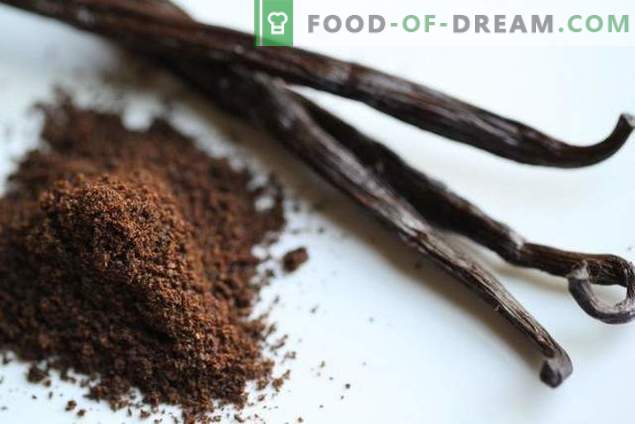
Real vanilla has little to do with vanilla or vanilla sugar, which we purchase in supermarkets for baking. It is indecently expensive, because its cultivation is very difficult, and yields are scarce - a maximum of two centners per hectare. Vanillin is a product of the chemical industry, and vanilla is the dried and powdered fruit of the perennial liana orchid family.
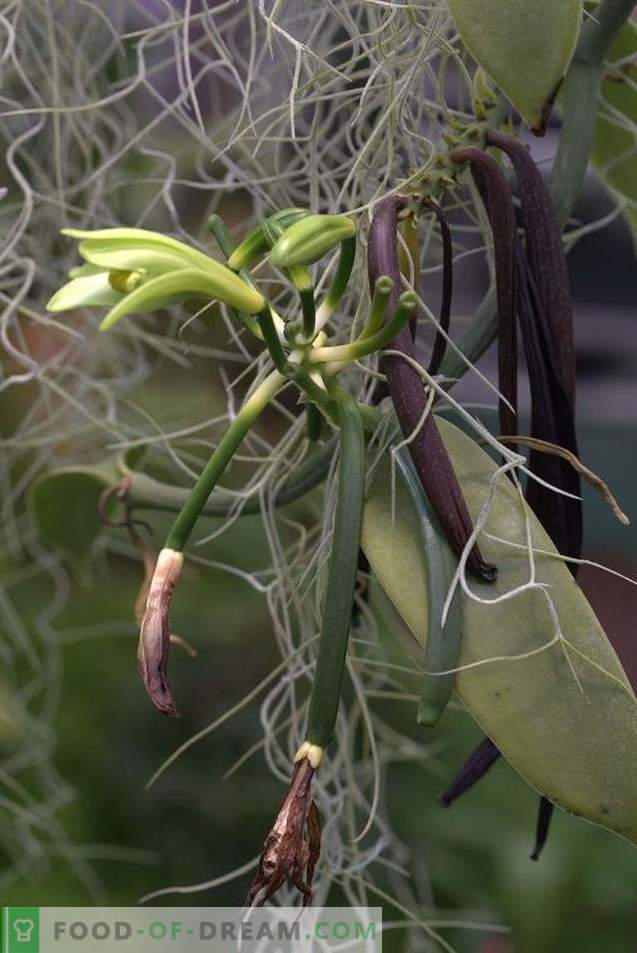
This plant, twisting a tree, climbs to a height of 15 meters. The vanilla stem is very thin, and the leaves are fleshy and flat, long and oval. They grow immediately from the stem, which does not give ramifications. Flowers vanilla bloom no more than one day. After fertilization, the ovary is found only on the 7th - 9th month! The fruit of vanilla is a narrow oblong cylinder about 25 cm long and one and a half cm wide with small seeds inside. The difficulties with growing vanilla are connected, first of all, with the problems of its pollination. Oddly enough, but in the wild, only one species of hummingbird and a bee of the same genus that lives only in Mexico can pollinate it. On an industrial scale, vanilla is pollinated manually. To do this, use a special brush. This is a very long and not always effective process. Only half of flowers pollinated by an artificial method, give the ovary.
13. Ginger
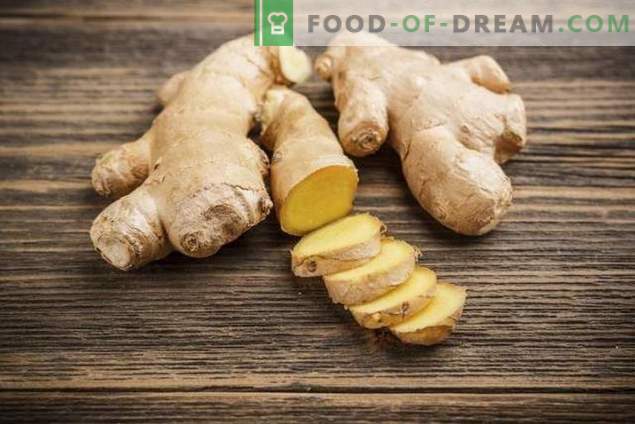
A perennial herb with long narrow leaves and a valuable rhizome - ginger - is rarely found in the wild today. What we eat is a crop grown mainly on plantations in India and Southeast Asia. Ginger flowers slightly remind us well-known irises.
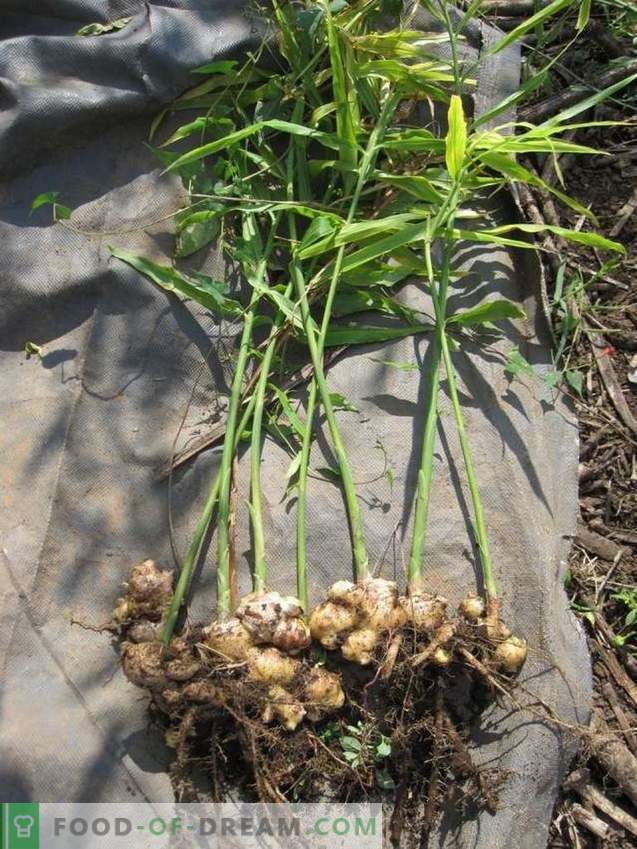
It is interesting that in the Middle Ages, ginger was introduced to Europe, where he became famous as the most effective preventive measure against the plague. Its price was simply fabulous. In cooking, ginger began to use much later than in medicine.
To learn how to grow ginger, read the article: Ginger - seasoning and medicine. Ways of growing.
14. Pistachios

We are accustomed to counting pistachios as nuts, although the science of Botany claims that these are the seeds of the fruit - the drupes. They grow on small trees, often called shrubs, with a dense crown. The pistachio tree blooms in April, the fruits ripen by September-November, depending on the variety and region of growth.
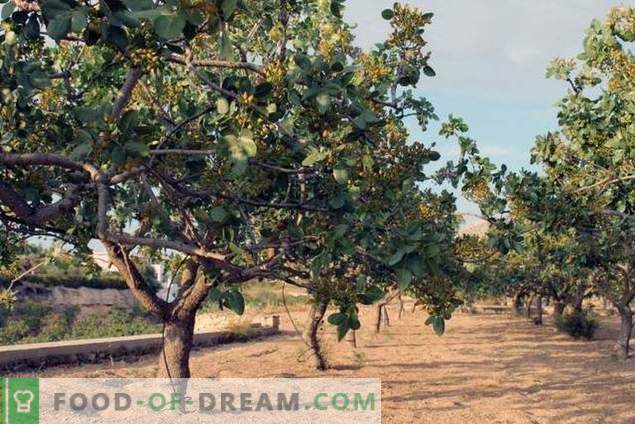
In the wild, pistachios grow almost everywhere in Asia, in areas of North-West Africa. The nature of Syria, Mesopotamia, Iran and Central America is rich in pistachios. Cultivate this plant in the south of Europe.
Pistachio trees are long-lived. It is believed that in favorable conditions they live for at least 400 years.
For more information on how pistachios grow, read the article: How pistachios grow?
15. Cinnamon
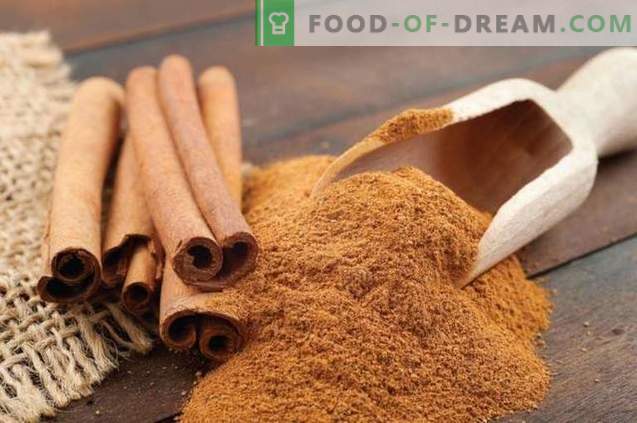
The spice of cinnamon is not a fruit, but a dried inside of the bark of a brown ceylon tree, which belongs to the laurel family and the brown cinnamon. Cultural plantings of cinnamon are planted shrubs. Twice a year, bark is removed from young shoots of plantations. This is a very troublesome thing. First, you need to wait until the end of the rainy period, then the bark is not so difficult to remove and its smell is the most saturated. Secondly, it must be removed in strips with exact parameters of length and width - 30 cm and 1-2 cm, respectively.
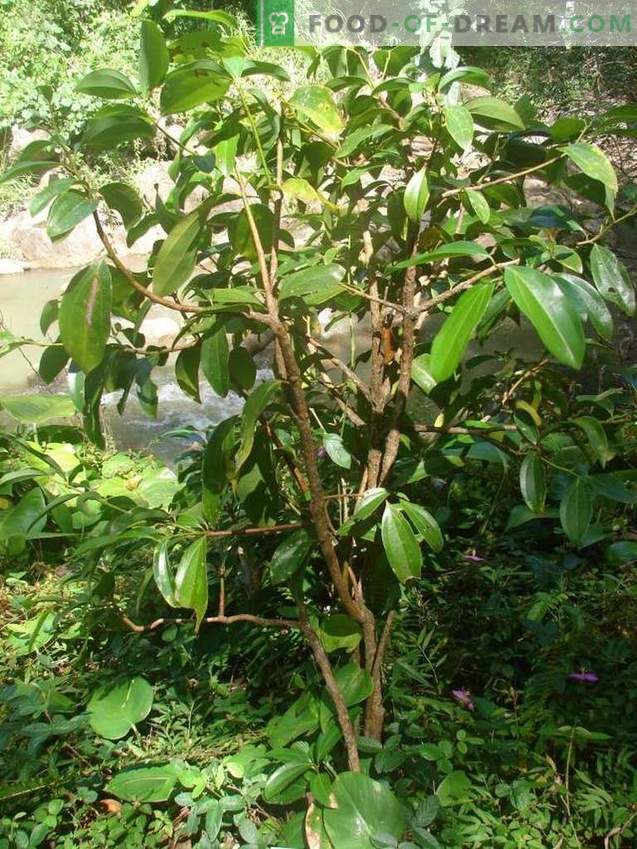
Cinnamon is considered the birthplace of Sri Lanka, but it is grown everywhere throughout India, Brazil and the countries of Southeast Asia. The best grades of Ceylon cinnamon are those that have bark as thick as a sheet of paper.
